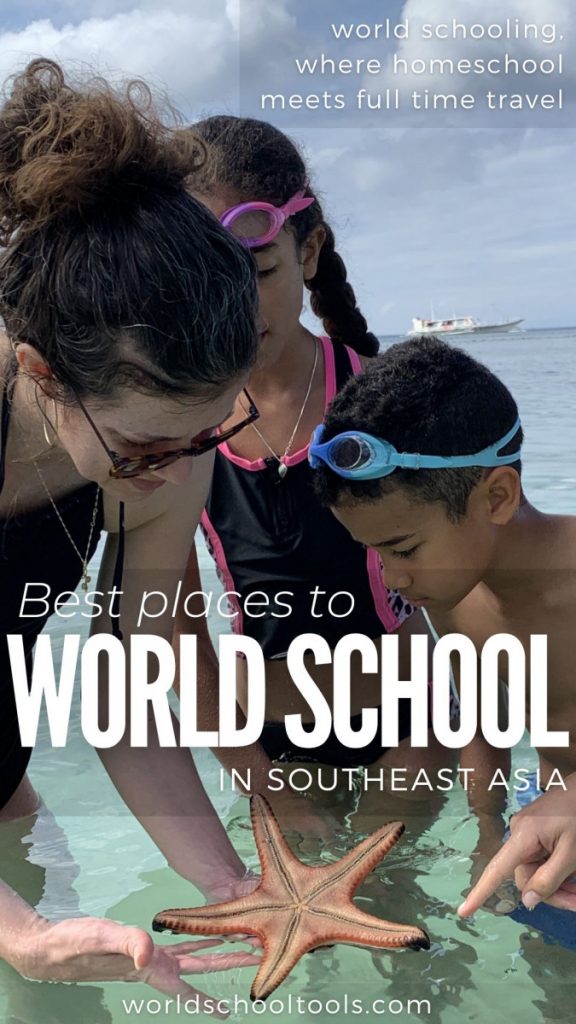One thing that’s clear from traveling the world for the last two years is that your choice of destination can have a huge impact on the quality of your worldschooling experience. In the Dominican Republic, part of the Caribbean Islands, frequent blackouts, water shortages, and internet outages made schoolwork painfully slow!
Of course, internet access is just one of many factors to consider when deciding where to worldschool. In this post, we’ll cover the key areas to consider when choosing which Southeast Asian countries to visit. We’ll discuss:
1 Lifestyle and Comfort
- Kid Friendliness: : Assessing how welcoming a place is for children, focusing on local receptivity and available fun activities.
- Health & Safety: Accessibility to quality healthcare and the overall safety and cleanliness of the environment.
- Nature & Weather: The impact of local climate and natural surroundings on everyday living and outdoor activities.
2 Cultural Experience
- Culture: The arts, traditions, customs, and history that distinguish a location.
- Experiences: Opportunities to engage with the community, including visiting attractions and participating in local events.
- Food: The local diet, diversity of food options, and customary dining practices.
3 Living Essentials
- Cost of Living: The overall expenses associated with residing in the area, including housing, food, and transportation.
- Internet Access: The ease of connecting online and the reliability of internet services.
- Housing & Transport: The convenience of transportation, including the availability of public transit and pedestrian-friendly routes.
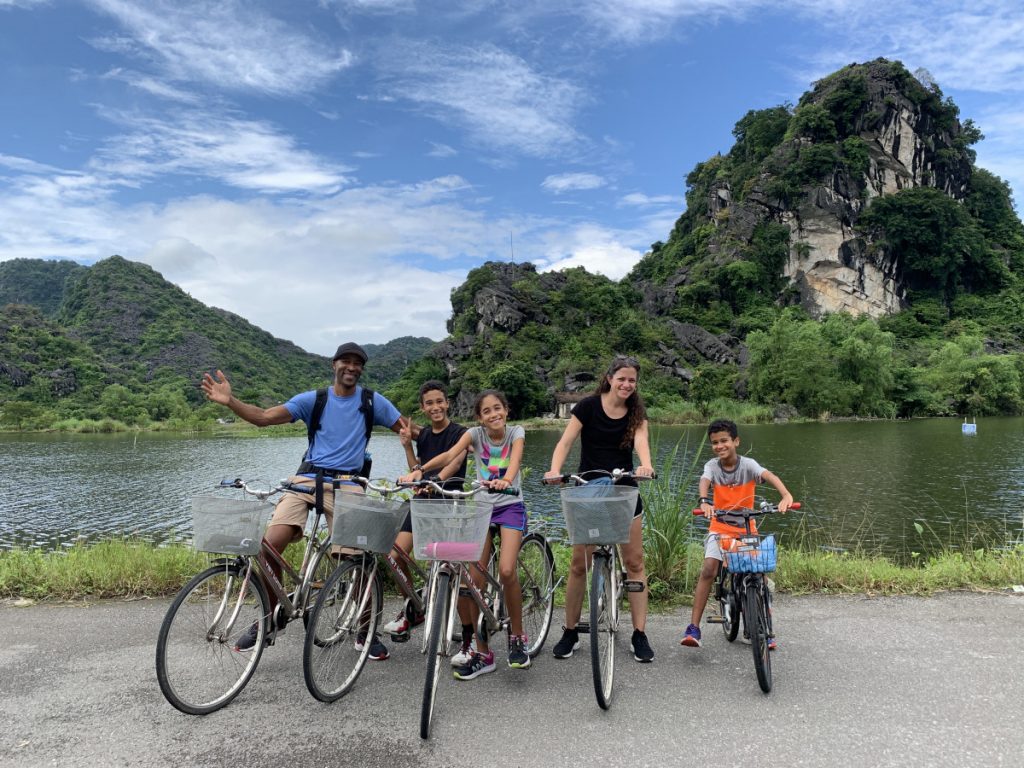
World School Rankings for Southeast Asian Countries
- Vietnam – 🥇Best Overall
- Indonesia – 🥇Food & Experiences
- Malaysia – 🥇Kid Friendliness
- Philippines – 🥇Nature & Weather
- Thailand – 🥈Housing & Transport
Southeast Asian Countries
Officially, there are eleven Southeast Asian countries. In all, we spent about six months slow traveling to Vietnam, Indonesia, Malaysia, Philippines, and Thailand. However, we haven’t visited the other six countries yet, for the following reasons:
- Singapore : This extremely popular destination is basically a massive city. We tend to avoid urban areas, preferring tranquil natural settings far from the hustle and bustle of city life. Also, it’s REALLY expensive – I think my wife is literally allergic to spending money 😅!
- Myanmar: This country has been facing a civil war for some time. We’ve met numerous refugees from Myanmar in Thailand, including women from the Karen (long neck tribe), who are actively hunted in their homeland.
- Brunei: There’s a significant risk of malaria here.
- East Timor: This location is quite remote. We have visited the Indonesian islands stretching west of the island, but not East Timor itself.
- Laos and Cambodia: These countries seem amazing, untouched, and even less developed than Vietnam in terms of infrastructure. Sadly, we couldn’t fit them into our last trip.
Given this, we won’t be able to provide detailed ratings for these six countries beyond what I’ve shared above.
Vietnam ⭐⭐⭐⭐⭐
1 Lifestyle and Comfort ⭐⭐⭐⭐
Kid Friendliness ⭐⭐⭐⭐⭐
Vietnam stands out in Southeast Asia with its minimal Western influence. Outside of cities like Da Nang, few locals speak English, yet their kindness and hospitality are endless! We were practically adopted by a Vietnamese family we met on a tour to Ban Gioc Waterfalls. They showed us around Hanoi, introducing us to local favorites and attractions. From a man on the street gifting his hat to Malaki, to invitations to join a private painting class, the generosity we encountered was heartwarming. Also, though we shy away from the usual tourist activities, the cities offer plenty of kid-friendly options, including malls with fun zones, theme parks, and skating rinks.
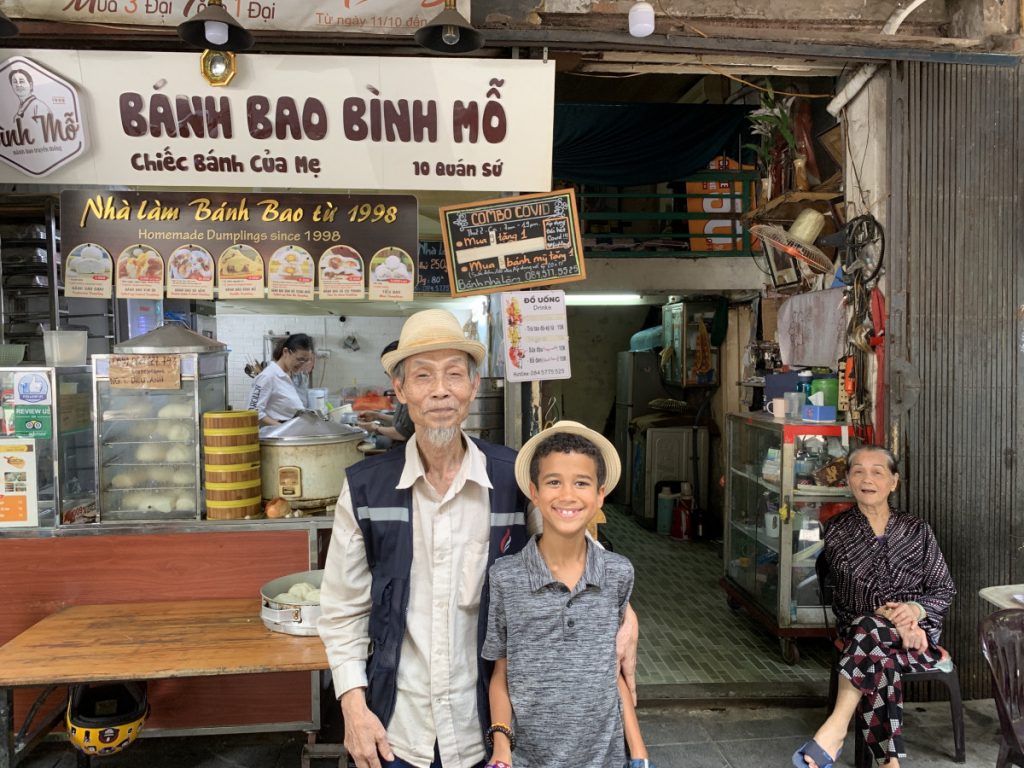
Health & Safety ⭐⭐⭐⭐⭐
Vietnam’s medical facilities are incredibly modern, a legacy of the French occupation. We chose to get several vaccinations here, as they were readily available and SOO MUCH (~10x) cheaper than in the U.S. After consulting the U.S. State Department’s list and reaching out to hospitals near Hanoi’s French Quarter, we were SUPER impressed by the immaculate conditions and the professionalism of staff who spoke excellent English. While in Vietnam we did have a medical incident involving our youngest who needed care for a cut. But, thanks to our Travel Health Insurance our previous positive experiences with the local healthcare we didn’t sweat it!
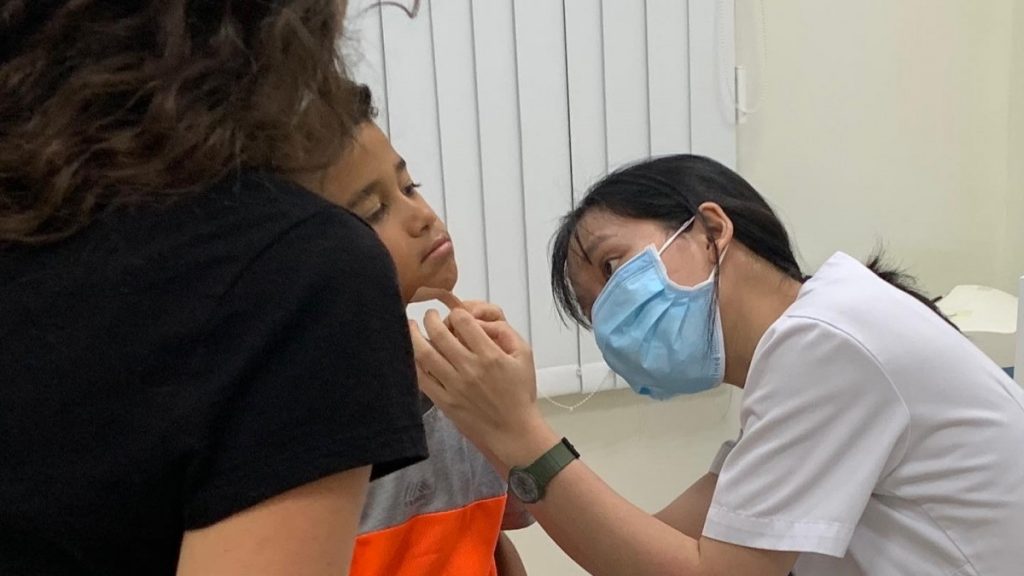
Weather ⭐⭐⭐
The weather can be INTENSELY HOT, particularly in the southern provinces during summer. We recommend checking temperature trends before your visit or planning time in the cooler, northern regions like Sa Pa, Da Nang, and Hoi An. We even escaped a cyclone by heading to Sa Pa, where the cooler weather and gentle breezes were a welcome change from the typical heat in Asia, where air conditioning is rare.
No joke. We joined a Rubik’s speed cubing competition in Hanoi while we were there. There were about 300 participants and their guests in a small conference room. There was NO air conditioning or air flow. After a few hours of sweat, we found some fans that we turned on to get some relief. If we ever walked away from the fans though we found that the locals immediately switched the fans off 😲.
Experiences ⭐⭐⭐⭐⭐
Vietnam ABSOLUTELY blew us away with its dramatic landscapes and cultural sites. From the crystal calm seas and dramatic limestone cliffs of Ha Long Bay to the architectural wonders like Da Nang’s Dragon and Golden Bridges. Hiking the rice terraces in Sa Pa and visiting the sprawling Ban Gioc waterfalls along the Chinese border were definite highlights of our trip. We also enjoyed a few cultural experiences like the Lantern Festival in Hoi An, the largest Pagoda and Buddhist Statue in Ninh Binh, and sampan rides in Trang An. I would say the only letdown was Ho Chi Minh City, which didn’t quite match our interests compared to other regions.
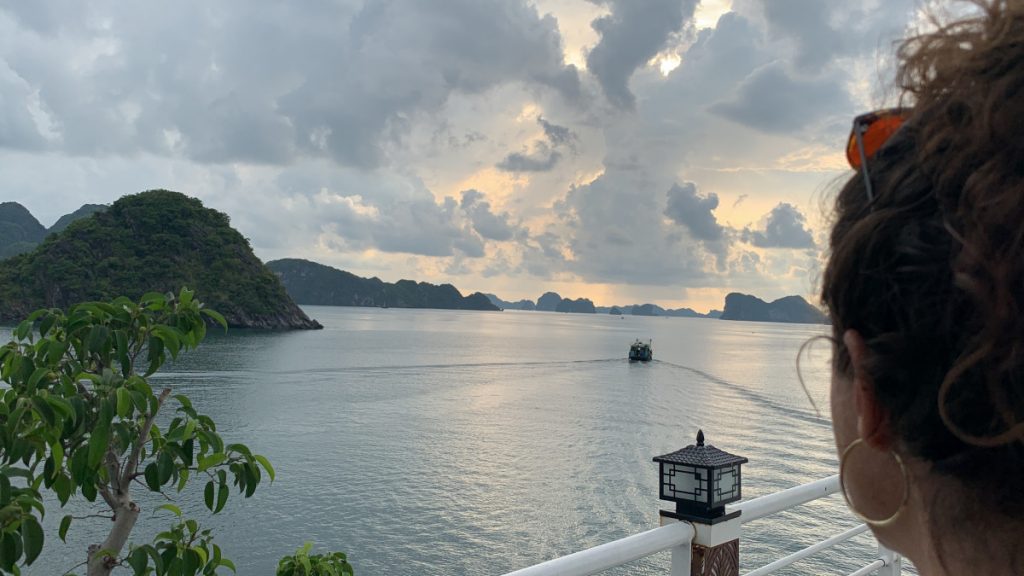
2 Cultural Experience ⭐⭐⭐⭐⭐
Food ⭐⭐⭐⭐⭐
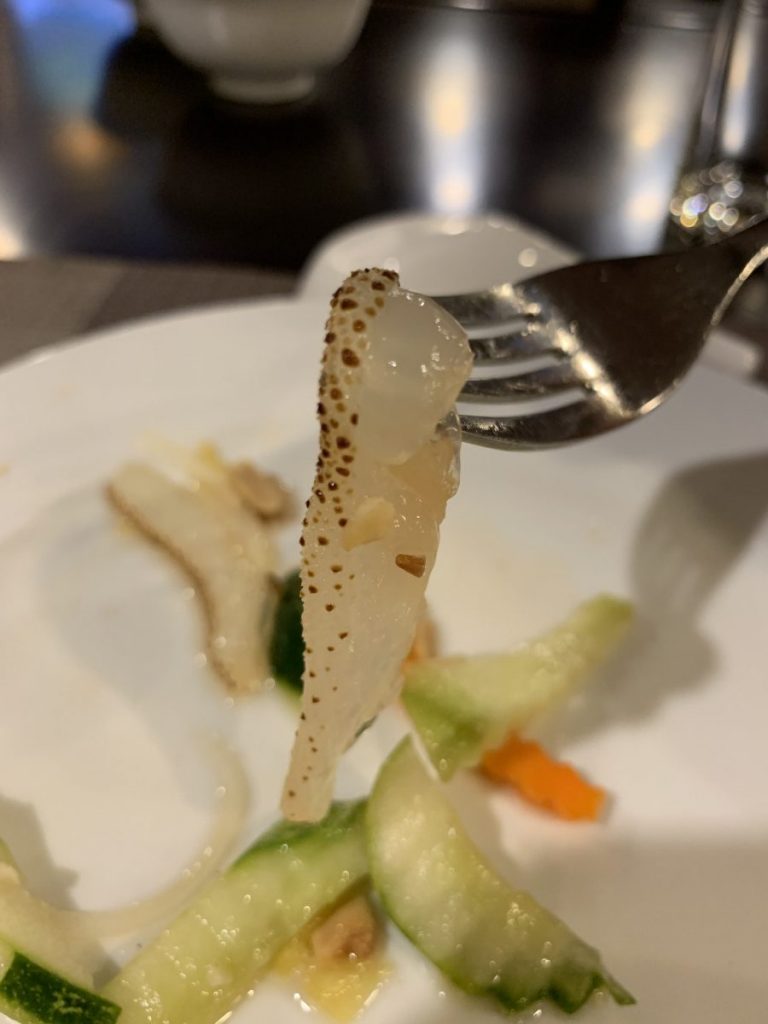
Vietnam offered us a plethora of culinary firsts, including jellyfish (surprisingly crunchy yet soft, much like pickles) and horse (a unique blend of beef and chicken flavors). For those eager for a culinary adventure, I highly recommend a Ha Long Bay cruise, well known for satisfying the sophisticated palates of frequent Chinese tourists with lavish 12-course meals. If you’re interested, let me know in the comments for the contact details of the local travel agent we used.
On land, the best way to discover authentic Vietnamese cuisine is simply to walk around. We always look for eateries bustling with locals and avoid the quieter ones. Vietnam’s culinary culture is fascinating because most shops specialize in just one dish, like chicken and rice, which they perfect. Don’t always trust blogs claiming to know “the best restaurant in the area”; sometimes, the unassuming street vendor outshines the highly-rated restaurants next door.
Be prepared for “the full experience” with your meat dishes here—they use the entire animal, which means navigating through bone, gristle, and fat in your meals. Depending on the dish we often opted for vegetarian dishes since my kids weren’t keen on picking through the blended textures. Despite this, the rich flavors, diverse textures, and variety of the food scene in Vietnam were absolutely captivating.
A fun note: if you’re not eating your food “correctly,” don’t be surprised if a fellow diner or server steps in to show you how—it’s all part of their hospitality, ensuring you enjoy your meal to the fullest!
Culture ⭐⭐⭐⭐⭐
In the West, we often hear of Communism solely in negative terms. However, our experiences in Vietnam painted a VERY different picture! We were struck by the pride the Vietnamese hold in their government and in Communism itself, which they associate more with mutual care than with oppression.
The family adopted us taught us about Vietnam’s history of liberation from foreign rule and its revered leader, Ho Chi Minh, who was inspired by global democratic ideals and even echoed the U.S. Declaration of Independence in Vietnam’s founding documents. Having a common definition of freedom REALLY resonated deeply with us, especially during our visits to Ho Chi Minh’s mausoleum and the American history museum in Vietnam, where we confronted the very recent and violent legacies of anti-Communism.
The communal spirit extends into daily life, where many homes and businesses are literally open to the street—common sights include hair salons and grocery stores operating out of living rooms. It was my wife who realized that this openness reflects the communal ethos of the Vietnamese people, which was as welcoming as it was enlightening.
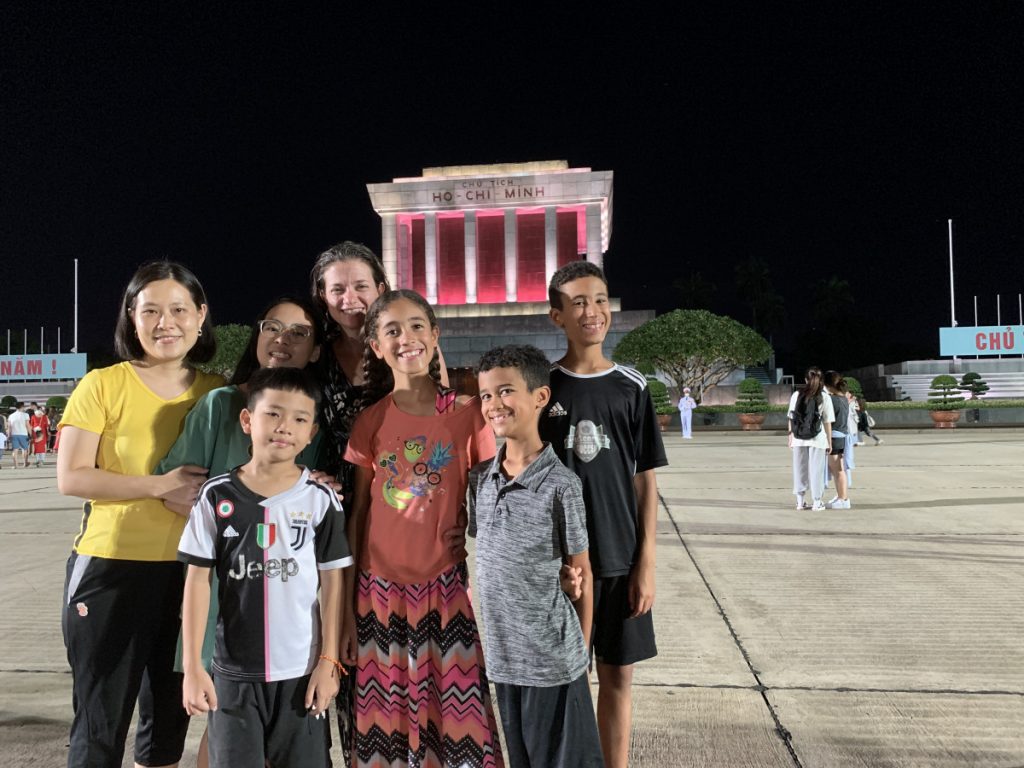
3 Living Essentials ⭐⭐⭐⭐
Cost of Living ⭐⭐⭐⭐⭐
The EXTREME affordability of Vietnam, especially in smaller cities like Da Nang and Hoi An, was a delightful surprise. It was common for us to feed our family of five for just a few dollars, even cheaper when buying from street vendors. The prices were so amazing that we indulged in a luxurious three-day cruise with suites offering 180-degree views for only $635! Our adventures in SaPa and Ninh Binh were also incredibly affordable, with accommodation and travel expenses remarkably low. The economic arbitrage made it irresistible to explore Vietnam’s myriad attractions so we took quite a few day trips from Hanoi.
One practical tip: managing cash flow is crucial, as many vendors can’t break large bills and may refuse a sale rather than lose their ability to make change later. Using larger bills at chain stores like WinMart can help you accumulate smaller change for everyday purchases!
Internet Access ⭐⭐⭐⭐⭐
Despite the chaotic tangle of cables lining the streets, Vietnam boasts one of the most reliable and fastest internet infrastructures in Southeast Asia. This efficiency might stem from the country’s contribution to global telecommunications labor, highlighting their expertise in network development. We had dependable high-speed Wi-Fi almost everywhere, with the exception of remote areas where we relied on our bus service’s Wi-Fi. Our e-SIM provider ensured seamless cellular data across more than 140 countries, allowing us to stay connected effortlessly.
Housing & Transport ⭐⭐⭐⭐
Getting around in Vietnam is easy and, of course, really cheap! Public transportation, taxis, tuk-tuks, and services like Grab (iOS, Android), the local equivalent to Uber, are widely available. But, driving in Vietnam can be overwhelming due to the intense traffic, reminiscent only of my experiences in India.
When booking accommodations, just be sure they have good air conditioning and fans; this is ABSOLUTELY CRUCIAL for survival, especially in the warmest months. For the best deals on hotels and homestays, we relied on the Agoda app (iOS, Android), which often offered better rates and cash-back opportunities than competitors like Airbnb or Booking.com.
Summary Thoughts
Our initial days in Vietnam were filled with surprises that set a high standard for our subsequent travels. While the heat and different sanitation standards might be challenging, the country’s charm and richness in culture, affordability, and natural beauty make it a TRULY remarkable destination. Vietnam offers an experience so vast and rich; one post can hardly cover all there is to explore so sure to check out our upcoming posts for more insights and tips on traveling in Vietnam!
Indonesia⭐⭐
Lifestyle and Comfort ⭐⭐
Kid Friendliness ⭐ | Health & Safety ⭐
When I think of Indonesia, I picture Jekyll and Hyde. On one hand, you have the breathtaking landscapes of its 18,000 islands and the genuinely warm people eager to share their world. Yet, there’s a darker aspect that seems deeply conflicted about its relationship with tourism.
Our initial interactions, like with the owner of a Mexican restaurant in Bali, were heartwarming. She went out of her way to make our visits special, even celebrating our child’s birthday with a personalized dessert.
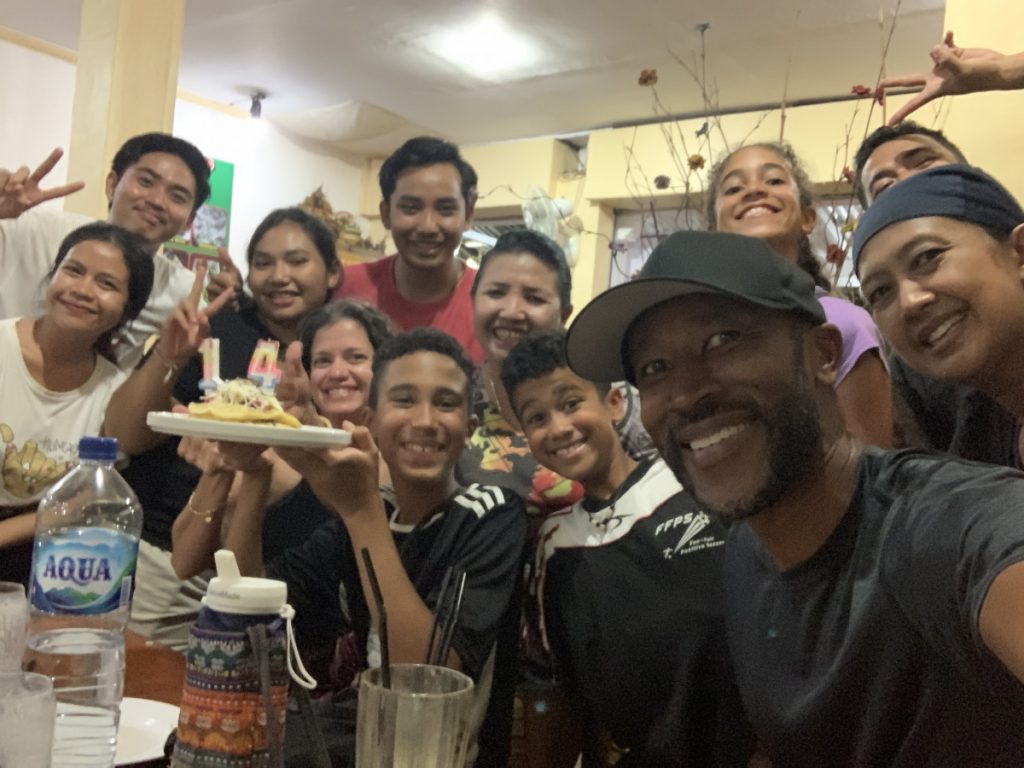
However, our dealings with businesses and government agencies painted a VERY different picture. We encountered scams during our attempts to cruise to Komodo Island, with blatant attempts to extort additional funds. Even on Padar Island, government officials tried to overcharge us, later asking us to sign a book to protest these impositions—a bizarre pairing to the island’s globally unique beauty, famed for its pink, white, AND black sand beaches!
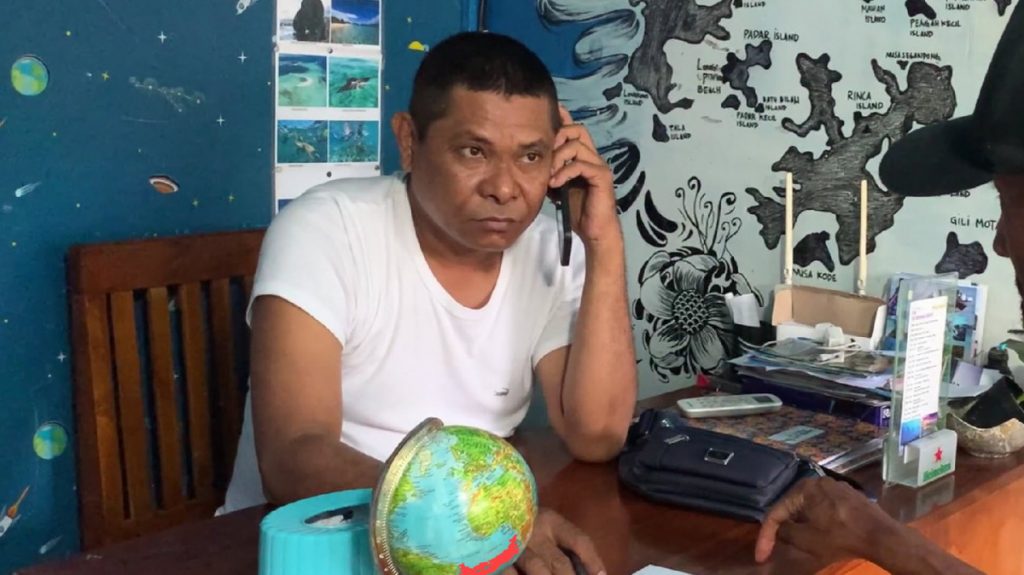
The looming threat of a significant increase in admission fees to Komodo Island, driven by government greed, casted a long shadow over the local tourism industry, which many believe could dry up due to such policies.
These intense contrasts might not be the most child-friendly environment, given the many potentially stressful situations. That said, the unforgettable experiences, like observing Komodo dragons and encountering a majestic manta ray, offer unique adventures that are unparalleled! Choices!
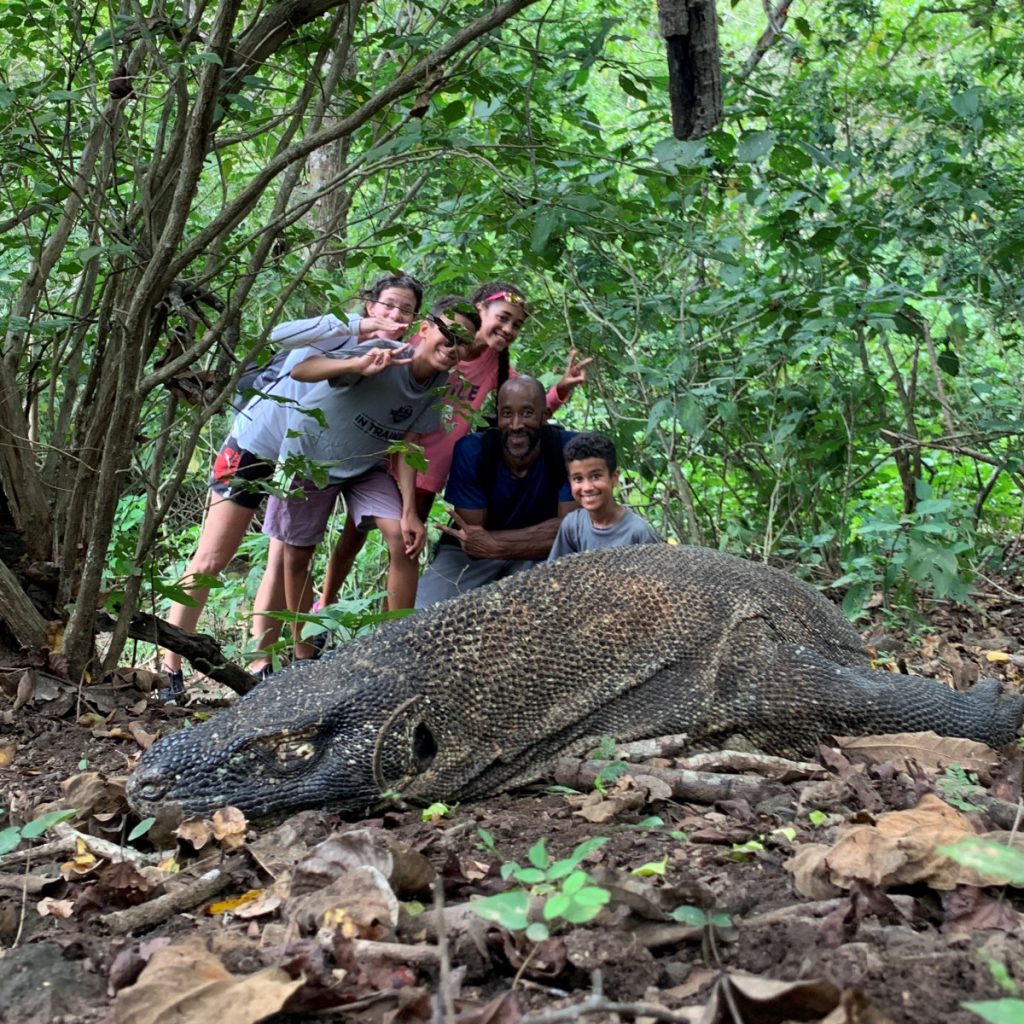
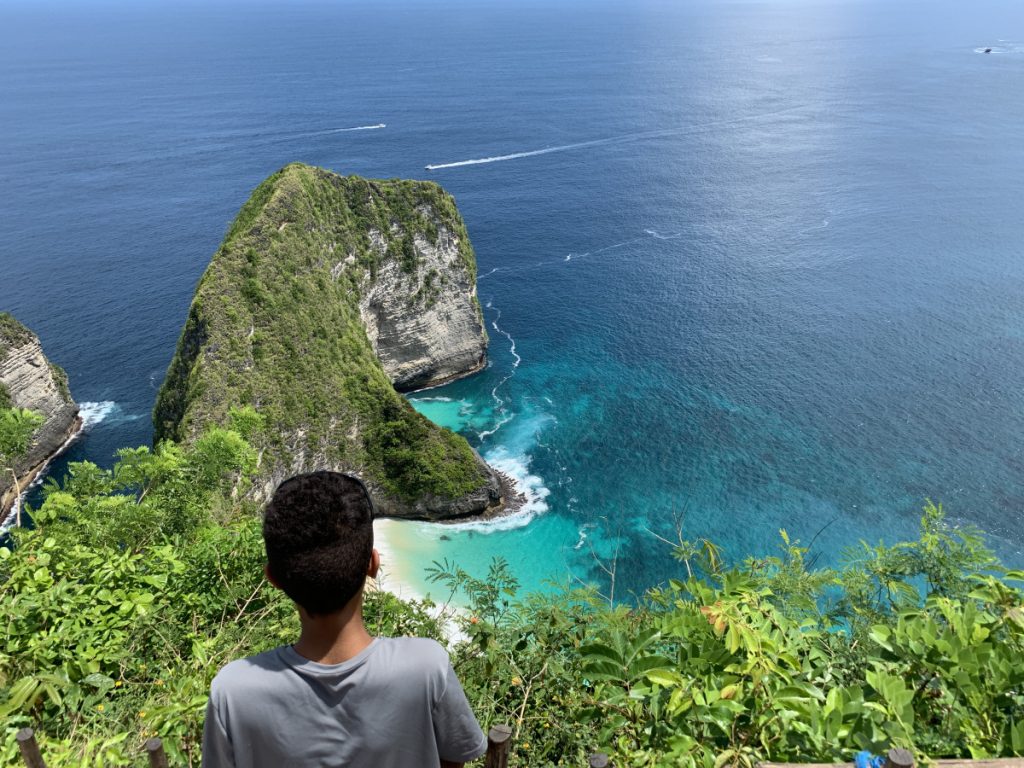
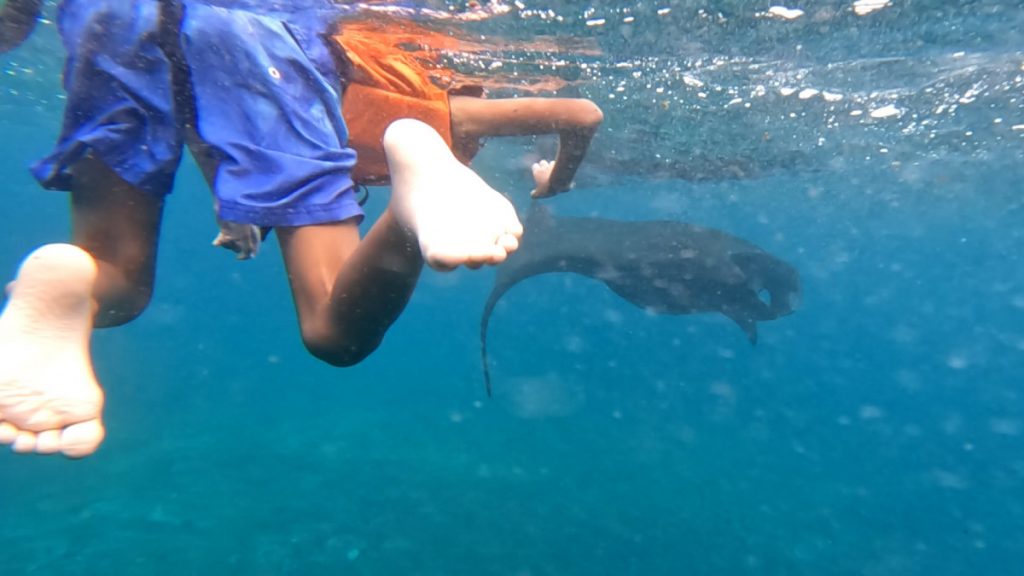
Nature & Weather ⭐⭐⭐
Our time in Indonesia was primarily spent in Bali, Nusa Penida, Lombok, and Flores en route to Komodo. The intense heat was consistent companion, as was the climate across the few islands we visited.
Kuta Beach in Bali was unfortunately the most polluted beach we’ve encountered in all of our travels, with daily clean-up efforts involving dozens of trucks. This issue stems from both oceanic trash and a local lack of environmental awareness that is yet to gain traction.
In contrast, Nusa Penida offered the stunning Kelingking Beach, which, despite its beauty, was inaccessible for our young children due to a dangerous descent and climb. Even so, our other experiences touring the island were less impressive, leading us to skip further explorations that might disappoint.
Gili Air, however, provided a refreshing change with beautiful, vibrant marine life, though the coral reefs demanded careful navigation to avoid injuries. This place was easily one of the highlights of our trip to Indonesia.
Cultural Experience ⭐⭐⭐
Experiences ⭐⭐⭐⭐ | Food ⭐⭐⭐⭐⭐ | Culture ⭐
Indonesia offers a myriad of incredible experiences, as I’ve mentioned, but the FOOD is worth a special mention! While we always strive to dive into local cuisines during our travels, Indonesia shocked us with its Michelin level prowess in cooking and plating dishes from other cultures.
In Bali and Nusa Penida, we indulged in some of the best Greek, Mexican, and Asian meals we’ve EVER had. The presentation of these meals was nothing short of spectacular, rivaling the quality found in upscale restaurants where one might expect petite portions. Instead, we were treated to both aesthetic and flavorful delights. In some places, we loved the food so much that our entire family would wake up early—something usually reserved for Sundays—to enjoy a poke bowl or a fresh fruit and yogurt bowl. The flavors and preparation were simply irresistible.
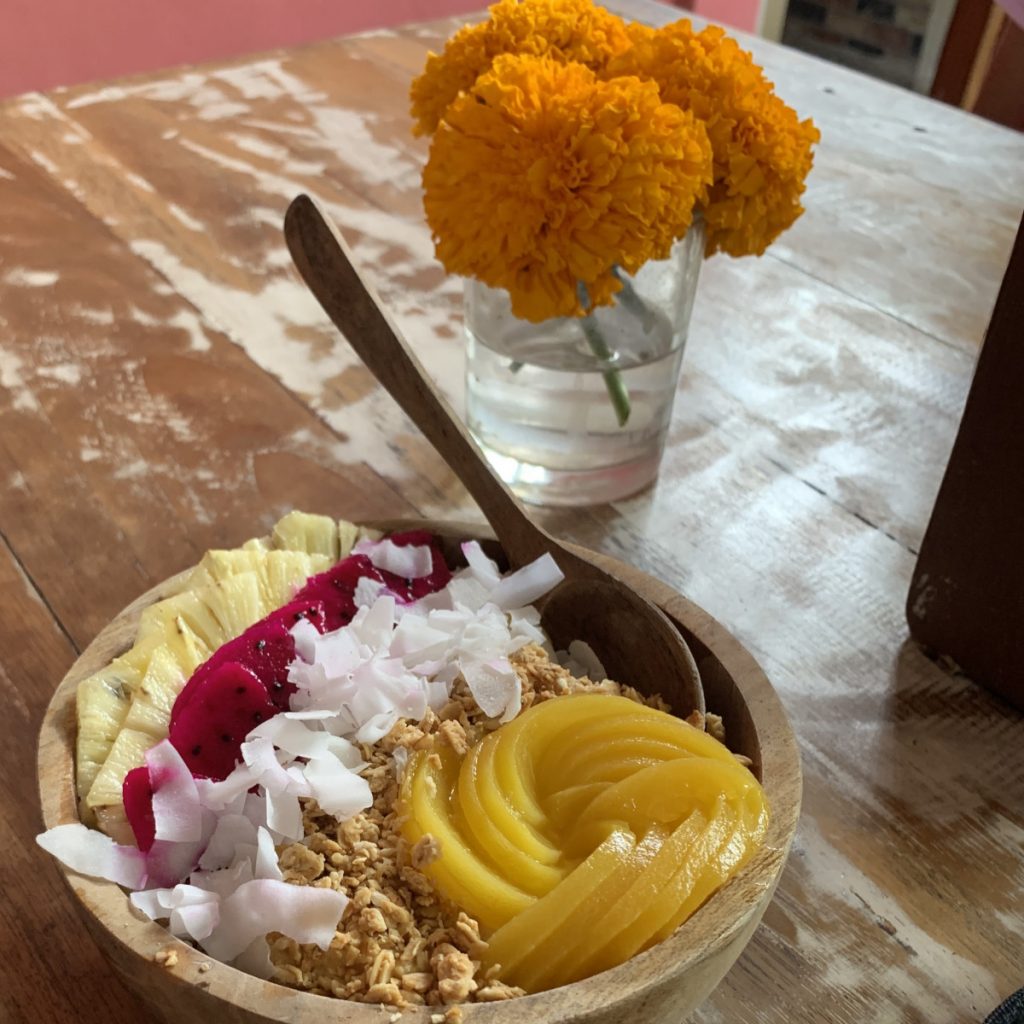
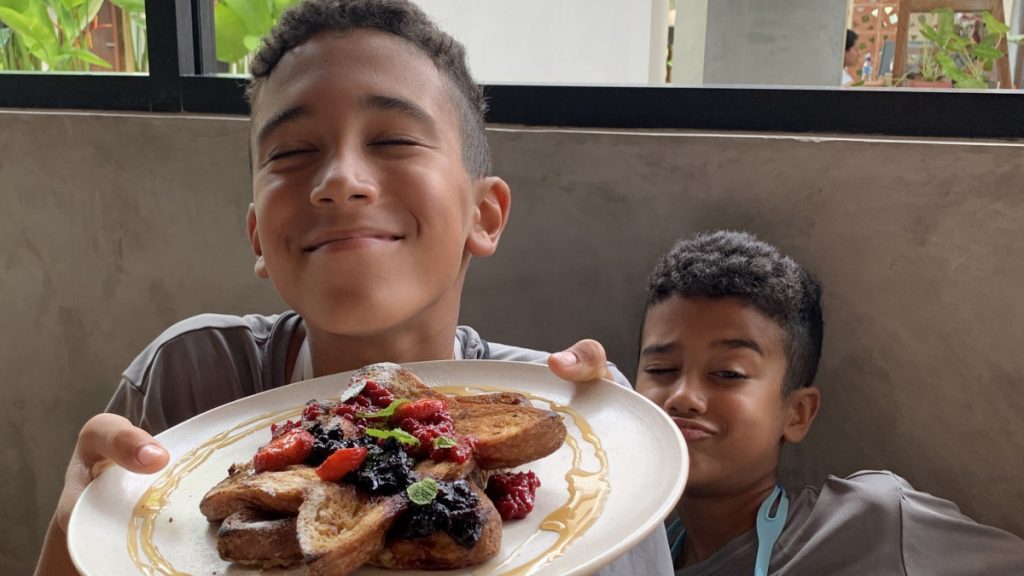
Culturally, Indonesia and Malaysia share a rich culinary heritage, as you can tell by common dishes such as Nasi Goreng and Nasi Lemak. These coconut rice dishes betray a history of cultural migration and shared traditions between the two nations.
Living Essentials ⭐⭐
Cost of Living ⭐⭐⭐
Living Essentials ⭐⭐
Cost of Living ⭐⭐⭐
In Indonesia, branching out beyond the tourist-heavy and government-controlled areas can lead to more reasonable prices. This was really clear in Bali, where the incredible Greek and Mexican meals I mentioned were significantly cheaper just one block off the main streets—costing nearly a tenth of what you’d pay in the more frequented areas.
The hotels we found, despite being budget-friendly, often featured beautiful aesthetics, a nod to a Balinese pride in design. Even the more affordable options typically included well-maintained swimming pools. However, air conditioning often underperformed, and due to the high humidity, mold was a common issue.
This was an issue for us as my daughter developed a skin reaction, and my son suffered from constant nasal congestion due to the mold and air conditioning units. For those sensitive to mold, higher-end accommodations or different destinations might be advisable.
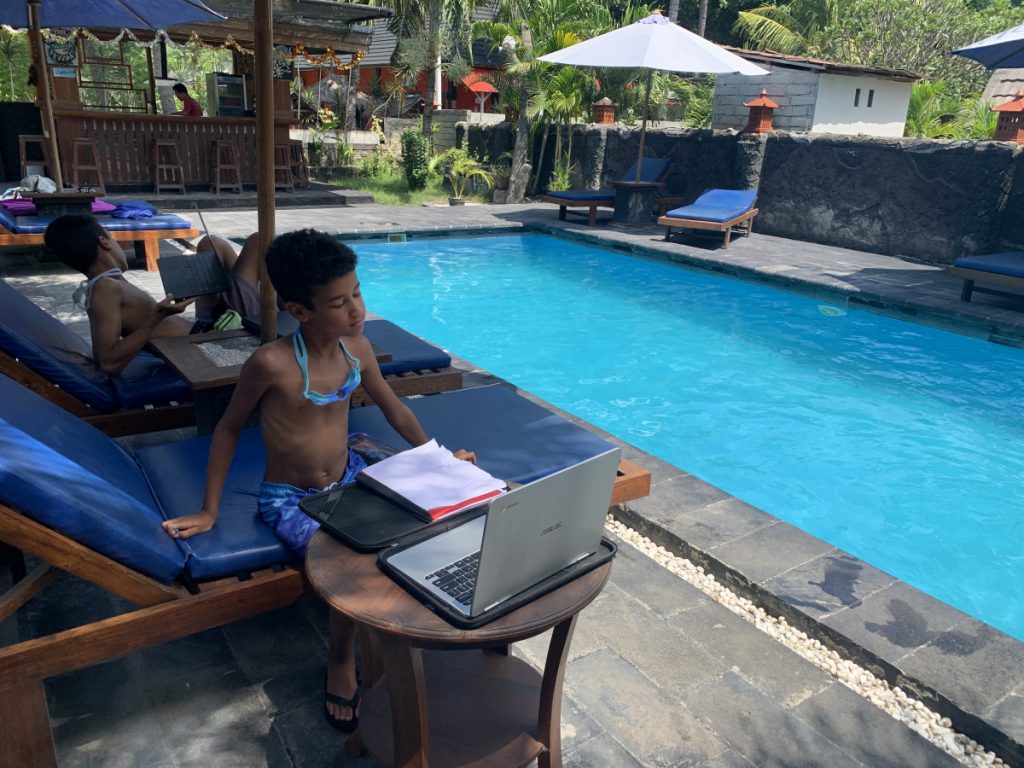
Internet Access ⭐
The internet in Indonesia was somewhat inconsistent, impacting the speed of our schoolwork but also allowing for a more relaxed pace. We often balanced our studies with breaks in the pool to escape the heat. Our reliance on e-SIM data plans ensured that our phones remained connected, helping to mitigate some of the slower internet speeds at our accommodations.
Housing & Transport ⭐⭐⭐
As with Vietnam, our go-to for good prices on hotels, and homestays is the Agoda app (iOS, Android). The prices consistently beat AirBnB, booking.com, Google and more and you get cash-back which you can apply on future bookings! We stayed at some amazing places for as low as $7 USD per night!
Summary Thoughts
Many travers we’ve met suggest that if you’re looking for a picturesque escape, staying in a mountain bungalow in Bali might be the best option to avoid the complexity and enjoy a quiet, consistent and fulfilling experience. In fact, if we ever go back, we might give that a try!
Malaysia ⭐⭐⭐
Lifestyle and Comfort ⭐⭐⭐⭐
Kid Friendliness ⭐⭐⭐⭐
After arriving in Kuala Lumpur, Malaysia, one comfort immediately stood out to our kids: “they have air conditioning” —often set to full blast! This might seem trivial unless you’ve experienced the relentless heat of other Southeast Asian countries. However, the real charm of Kuala Lumpur isn’t only for its creature comforts.
Kuala Lumpur, despite its size, doesn’t feel overwhelming like other metropolises. The city’s architecture integrates high-rises that resemble works of art more than mere buildings, and there’s a concerted effort to incorporate greenery throughout the urban environment.
For families, Kuala Lumpur is a playground. The city is filled with attractions like the Kuala Lumpur City Center (KLCC) park, butterfly sanctuaries, and the thrilling sky walk at the KL Tower, where kids and adults alike can suit up and walk high above the city, safely tethered to prevent falls. If you’re less inclined towards heights, the city also has tons of malls with kids’ centers, theme parks, ice skating rinks, zoos, and aquariums!
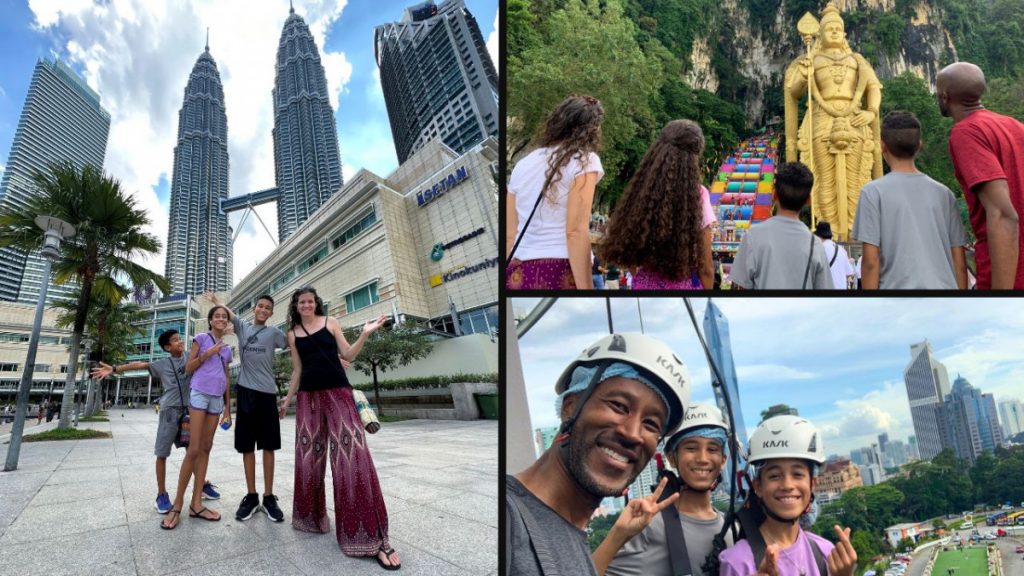
Health & Safety ⭐⭐⭐⭐ | Nature & Weather ⭐⭐⭐
In Malaysia, we spent time in Kuala Lumpur, Penang, Terengganu, and Perhentian Island where we generally felt safe. That said, there was one exception:
We had arrived in Penang at 2am and after completing the self-check-in at our AirBnB, were surprised to find that our room was in complete disarray. Trash everywhere, sheets strewn about and the room smelled like unwashed old man. We couldn’t get a hold of the AirBnB host so we did what we could to make the best of the situation, resolved to get a refund and find a new place the next morning.
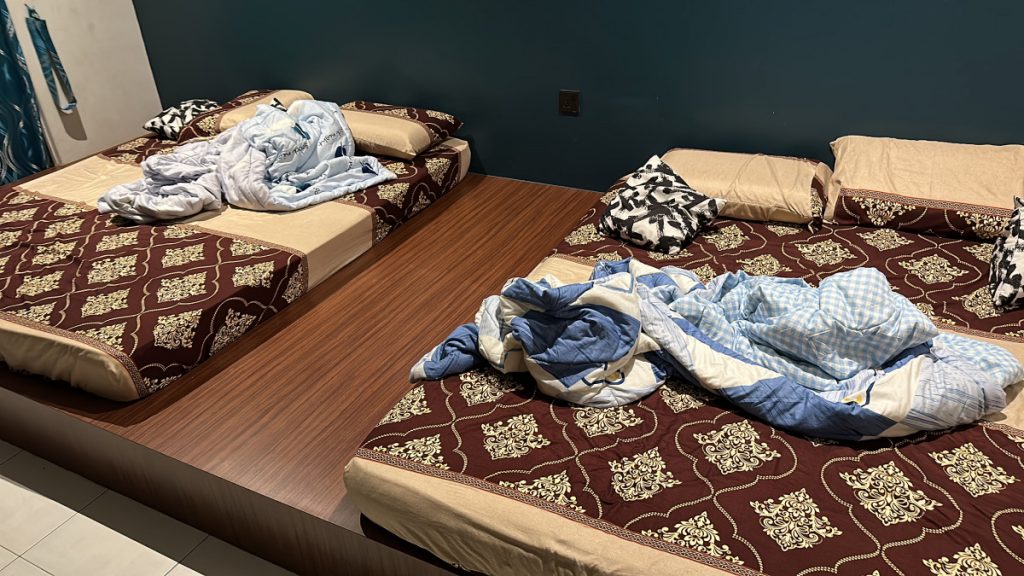
No sooner than I undressed and laid down, my wife opens the door to go out and see if she could find some other sheets. She stands there shocked because a man was reaching for the door about to come in the room. She slams it and screams. “Don there’s a man that’s trying to come in!” I threw my clothes on and dashed out the door. I looked through the entire house and couldn’t find anyone.
The next day after a lot of back and forth with the host we did get our refund. In an effort to figure out if someone broke into his place he asked if we could tell him the description. After hearing it he goes quiet and then says that’s my brother. He’s mentally disturbed… Needless to say, we were happy to find another place to spend the next few nights! 😆
We spent more than a month in Malaysia and weather wise, we found it to be pretty warm everywhere. However, between the once-a-day rainfall and the air conditioning it never really felt uncomfortable. The one exception was in the more rural areas of the North East when visiting Perhentian. There, accommodations were pretty rudimentary.
Cultural Experience ⭐⭐⭐
Experiences ⭐⭐⭐⭐
One of the unexpected highlights for us in Kuala Lumpur was the KL Bird Park, one of the largest enclosed aviaries in the world. They have a tremendous variety of bird species there and for the most part you’re in the enclosure directly with the birds. They use separate cages sparingly for some of the more delicate or dangerous species but you really can get in close to get a sense for the diversity of species that are indigenous to the area.
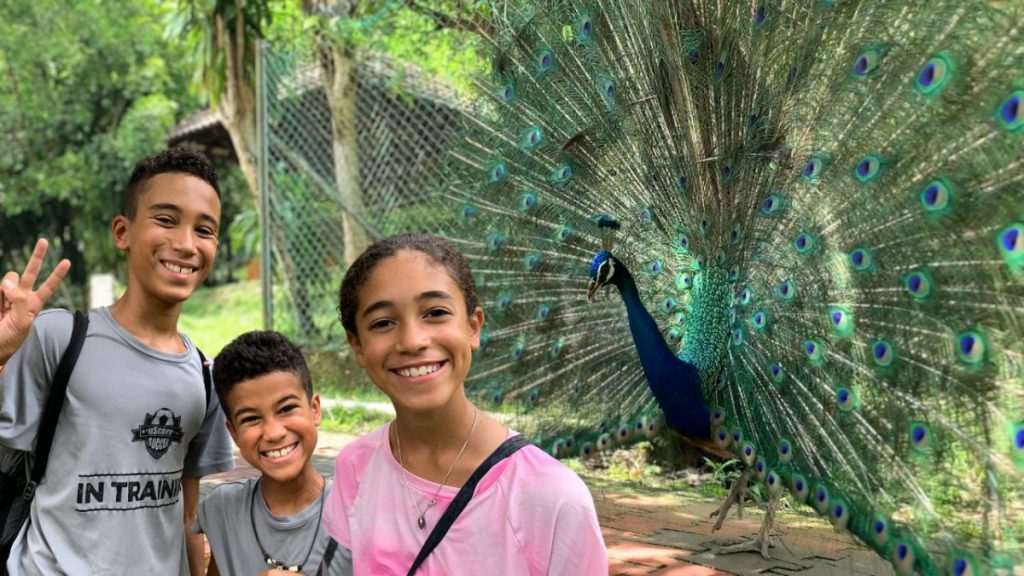
Definitely check out the butterfly park as well. It is this beautiful little oasis right in the middle of the city. There is a mesh overhead that turns the sanctuary into an enclosure and it also blocks the sun, which can take the edge off if it’s a sunny day. The insect exhibit that you’ll see as you exit the sanctuary is worth the price of admission on its own. You will see insects, both living and preserved, that are several times larger than you believe even existed on this planet!
There are also several attractions that are within day trip distance from Kuala Lumpur including Cameron Highlands tea gardens, the Firefly Park, and Genting Highlands amusement park. So be sure and make a nice road trip out of these for your family as well.
Food ⭐⭐⭐⭐ | Culture ⭐⭐⭐
Malaysia is really unique among places we’ve been in that it is a true melting pot of three dominant cultures. The Malays (indigenous), Indian, and Chinese cultures. As a result, you’ll find a mouth watering wide array of culinary options available to you. Malay cuisine features a lot of lemongrass, ginger, and turmeric which gives you a little extra zing. Many dishes include coconut rice, with spicy sambal, peanuts and crunchy anchovies. The dishes feel bold but comforting!
You might think you know Chinese food, but if you haven’t had authentic Chinese you’ll find it to be less sweet, salty, or saucy. Get read for a heavier focus on balancing flavors, highlighting the natural taste of fresh ingredients, soy sauce, garlic, ginger, and other aromatic spices used more sparingly to allow the ingredients to shine through. There is also a wider range of cooking techniques like steaming, braising, boiling, clay pot cooking, etc. In fact, in Kuala Lumpur we ate some astonishingly AMAZING Chinese vegetarian dishes that I cant even begin to describe to you. We also enjoyed dim sum in the KLCC mall that literally had soup at the bottom of it. How do they do that!?!?!
Last but certainly not least is our favorite cuisine in the world, authentic Indian. We LOVE LOVE LOVE a nice curry with some crispy naan. When you have authentic Indian food, the spice and texture dials are turned on maximum warp. Ingredients like cumin, coriander, tumeric, are used generously to create that amazing layer cake of complex flavors! You just want to grab it all with some naan and just jam it in your mouth! And you can totally do that because authentic Indian restaurants eat with their hands! We knew we weren’t eating up to our full potentials!!!
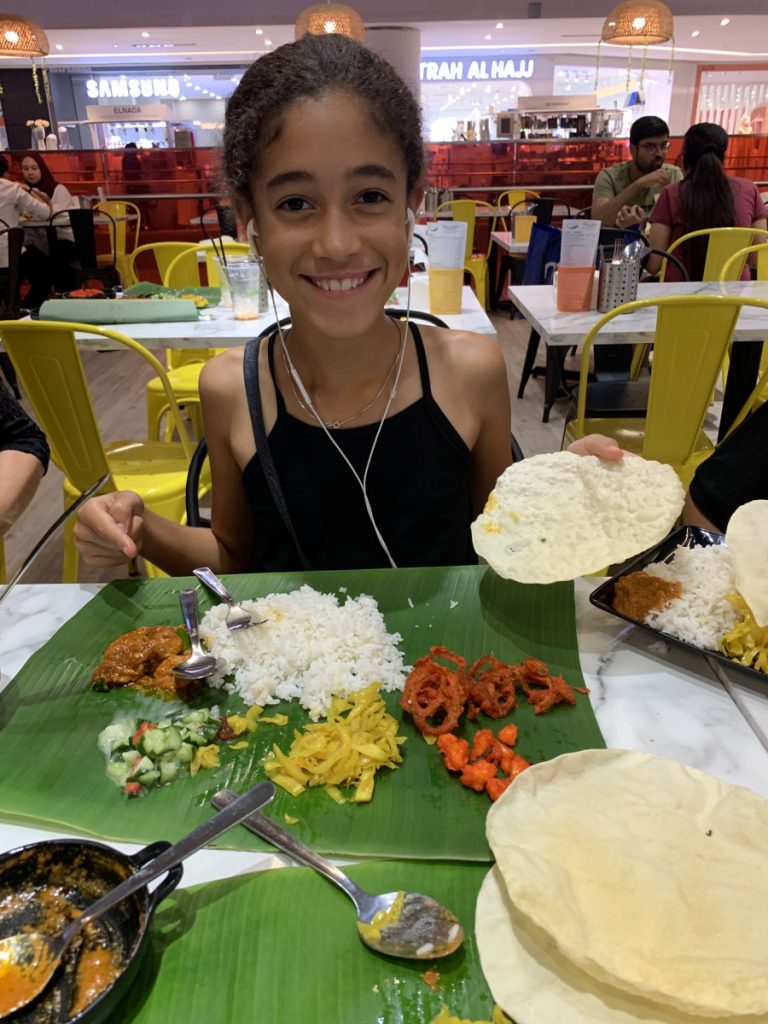
Jln Alor is a famous food district where you can go to try street food or enjoy any of the many sit down venues. There you can get low cost, but delicious foods. If you want some bragging rights, be sure and try some Durian, also known as the worlds slinkiest fruit!
But if you’re a foodie you should definitely head to Penang city, known as the food capital of Malaysia. Flights are cheap, but we spoke with several locals who make the nearly 4 hour trip a couple times a year! We were in and out so I don’t have any recommendations for you other than to check out Penang Hill. They have a beautiful nature preserve there that makes for a wonderful hiking experience.
If you visit sites like Batu Caves, or the various Mosques or Temples you can start to get a glimpses of the three cultures (Muslim, Buddhist, Hindu) through their religious ceremonies. What’s nice is these religious centers can co-exist within blocks of each other and enjoy a level of tolerance that the rest of the world should envy.
Living Essentials ⭐⭐⭐
Cost of Living ⭐⭐⭐ | Internet Access ⭐⭐⭐ | Housing & Transport ⭐⭐⭐⭐
One nice thing about Kuala Lumpur is it is a technology center. Coincidentally, may laptop keyboard failed on me and I crashed my drone while trying to film a 5 foot monitor lizard! So, I took them into the official ASUS and DJI stores there in the city, thinking it was far more likely I could find them in KL than back at home in Texas where I would have to mail them somewhere!
I say that to say we were there for one to two months and over that time we had the opportunity to stay in a few different places and have VERY different experiences. In Kuala Lumpur and Penang cities we stayed in some very nice accommodations. Aside from the little mishap I mentioned above involving a half naked mentally challenged brother, we had great experiences. Very clean, comfortable, great air condition, walking distance to food and grocery options.
However, when we flew to the Northeast to see the amazing Perhentian Islands we decided to stay on the mainland and day trip to multiple islands rather than pay orders of magnitudes more for the resorts on the islands. This place boasted two bathrooms, two queen beds, with an extra bed, two air conditions with fans and for a great price!
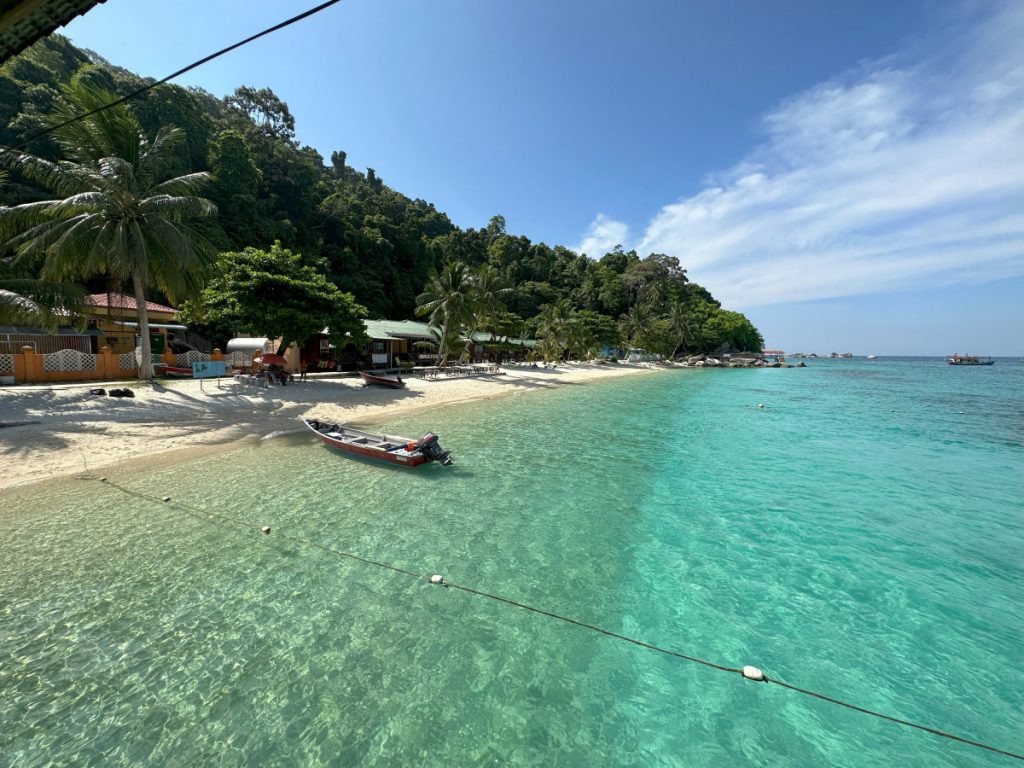
When we got there we realized they might have exaggerated a bit generous on their descriptions. One of the two bathrooms was a large bin filled with rain water and a bucket for showers. The other bathroom was a hole in the ground for, well, you know. The extra bed was a beanbag on the floor. Neither air-conditioned worked and while the ceiling fans technically turned, they didn’t offer much in the way of conditioning! And, it was hot… So, do your homework in the rural areas especially if you’re prone to these little surprises because you like to save money on accommodations 😆.
Philippines⭐⭐⭐
We absolutely loved the Philippines but before we get into the details I wanted to share that we actually used travel rewards to book our flight to Manilla. We only paid $88 for $4,000 in tickets! Since then many have asked if they could do something similar as a low cost way to test drive world schooling. The short answer is yes! But rather than explaining it over and over I’ve put together a free 7-day email series that explains exactly how we’ve used credit card rewards to book trips like these and raise our credit score in the process!
Lifestyle and Comfort ⭐⭐⭐
Kid Friendliness ⭐⭐⭐ | Health & Safety ⭐⭐⭐ | Nature & Weather ⭐⭐⭐⭐
We found the the Filipino people to be super sweet and we never felt unsafe walking the streets with our kids. In fact, most Filipinos seemed to be curious about us and how we found their country. There is a pervasive sense of pride that the people have about The Philippines and they almost want to have it confirmed by every traveler they happen across. That said, we were warned to avoid much of the largest island to the south east and the sulu sea due to terrorist and pirate activities!
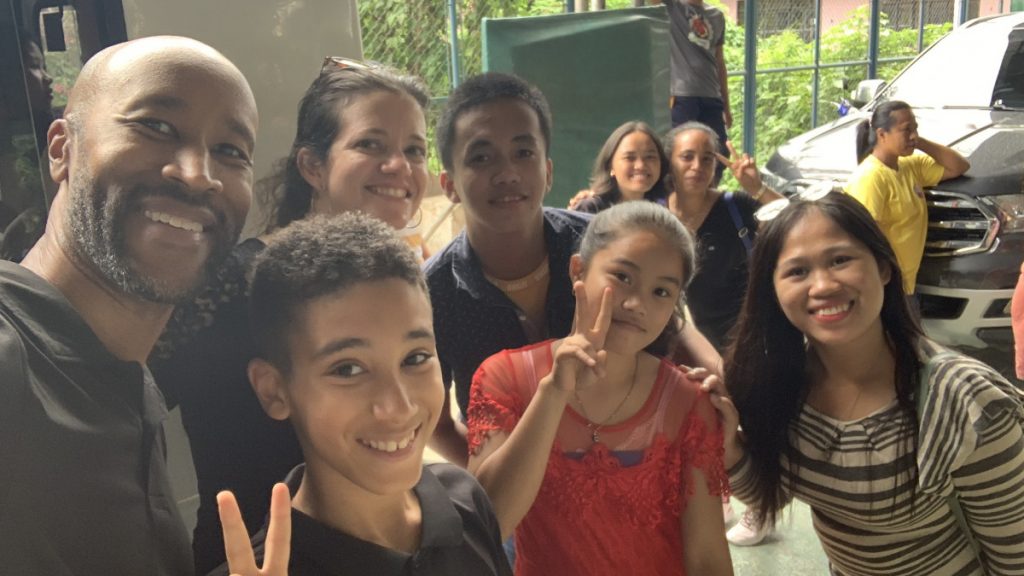
For a while we were blogging many of our adventures and we found that the viewership of our videos about the Philippines was significantly more than that of any other country we had been too. When we reviewed the analytics we realized why that was. It wasn’t that more tourists were interested in the Philippines, but the locals who were watching to see how tourists react to their culture, their food, and the experiences their country has to offer!
The Philippines are still one of the most beautiful places we’ve ever been. It was warm, but with the breeze it never really felt terrible. They seem to have a disproportionate allotment of truly beautiful beaches with turquoise blue water and abundant sea life. One of our favorite beaches in the whole world still was an unsuspecting, relatively quiet beach called Alona Beach on Bohol, Philippines. There, we saw a huge variety of starfish, hermit crabs, sea anemones, and more. Alona beach was also a perfect launch point for some day trips to nearby islands!
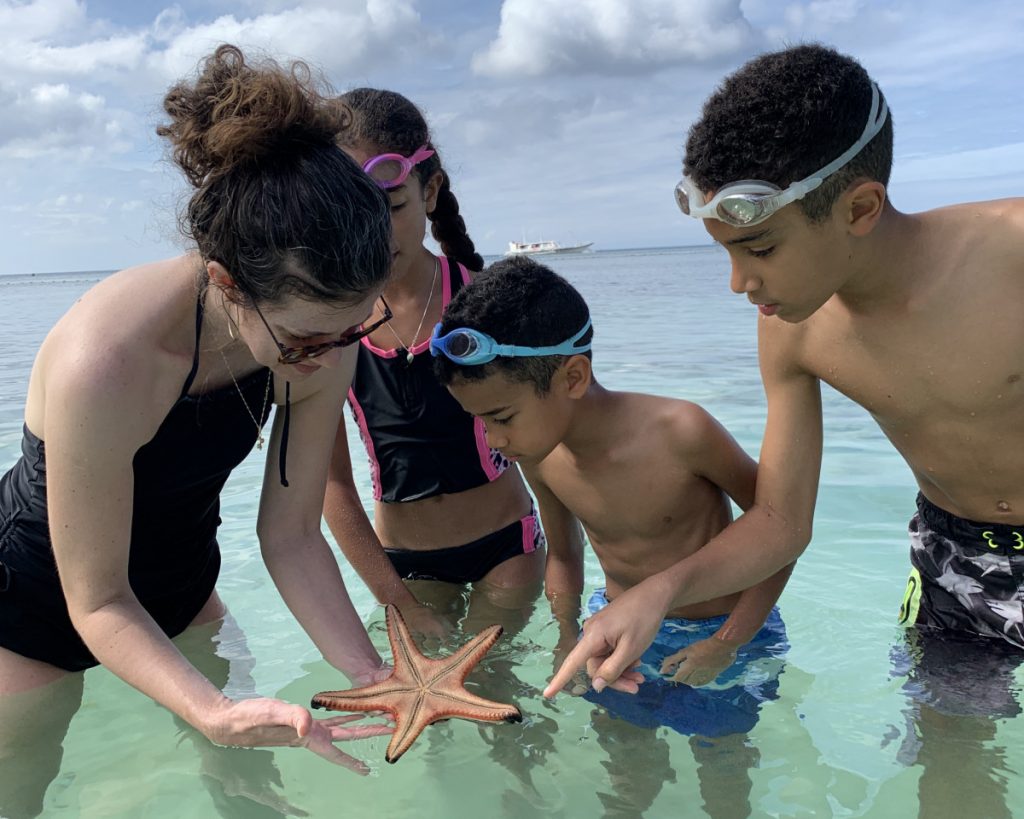
Apparently Palawan Island is by far the most beautiful set of beaches in The Philippines, confirmed many times over by the locals there. We didn’t go because there is an elevated Malaria risk and we didn’t want to bother with the medications or take our chances. That doesn’t seem to stop most people though, so something to consider if you’re heading that way!
Cultural Experience ⭐⭐⭐
Experiences ⭐⭐⭐
Island Hopping in The Philippines
To us, one of the coolest things you can do in The Philippines is go Island Hopping to many of the more than 7,000 islands there! From Bohol, we visited Balicasag Island, Virgin Island, and Pamilican Islands. And wow were they amazing. On Balicasag and Pamilican we took a small boat out to the reef where we snorkeled in the deeper waters. We saw sea turtles, giant clams, sea cucumbers, and thousands of tropical fish. It was amazing! On the way out to the island we saw pods of dolphins, flying fish, and a sword fish!
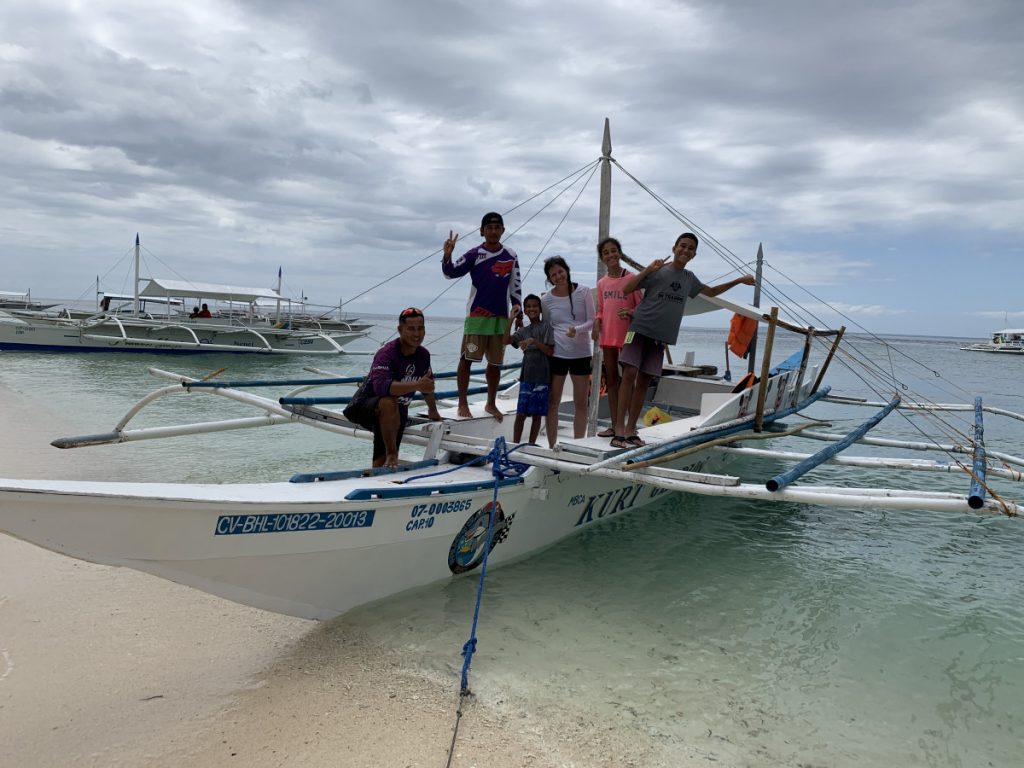
Best Place to See Whale Sharks In The Philippines
One thing we would not recommend from Bohol is the Whale Shark encounter. We thought it would be a more ethical encounter than the ones in Oslob but we were wrong. For one, they were feeding the Whale Shark which completely messes up their migration patterns. I wouldn’t take too much exception to this normally except they are pretty rare due to overfishing.
But there were more issues. They had hundreds of tourists crowding the thing which feels less than humane, but also make it nearly impossible to see the whale shark with everyone crowding around the thing. The worst thing for us was the thousands of tiny jelly fish that were in the water at the time we arrived. We didn’t receive any warning about this at all. In fact, our only clue was that the guides were cursing despite their wetsuits. They kept pressuring us to get in the water because there was no time.
Meanwhile we were struggling to get the mask the fit our youngest. It was a crazy scene, with two of my kids trying to balance on the ships stabilizers to avoid the jelly fish, the guide yelling at us, and the mass of people crowing the giant beast. We did eventually get in the water, swam through the mass of invisible stinging jelly fish to see what we could see. My oldest got hit in the chest by the Whale Sharks tail lol and we got lots of GoPro footage of whale shark butt 🤣.
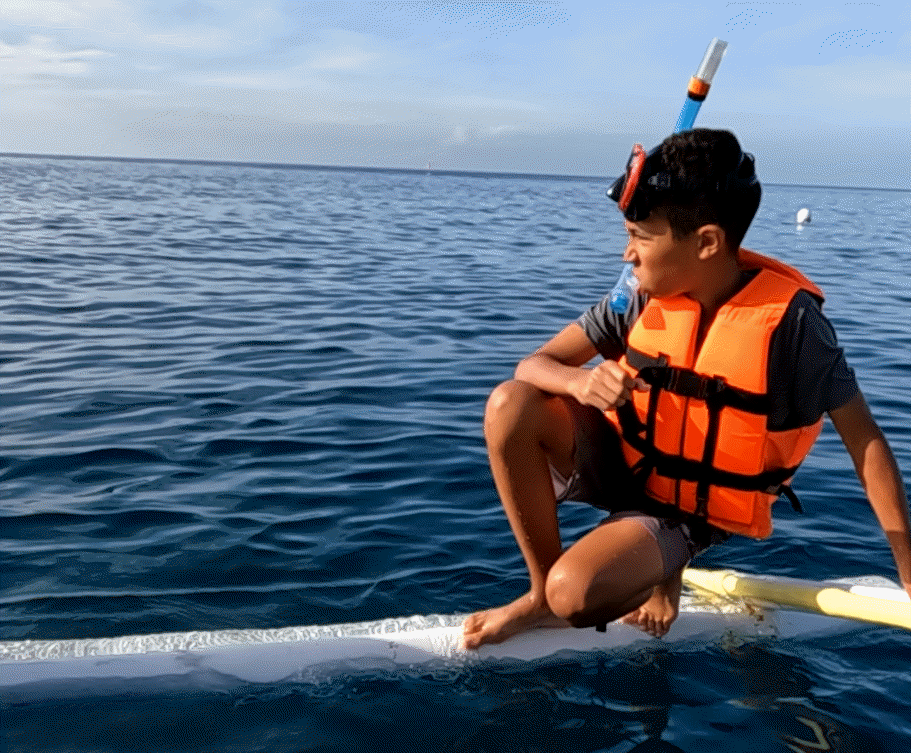
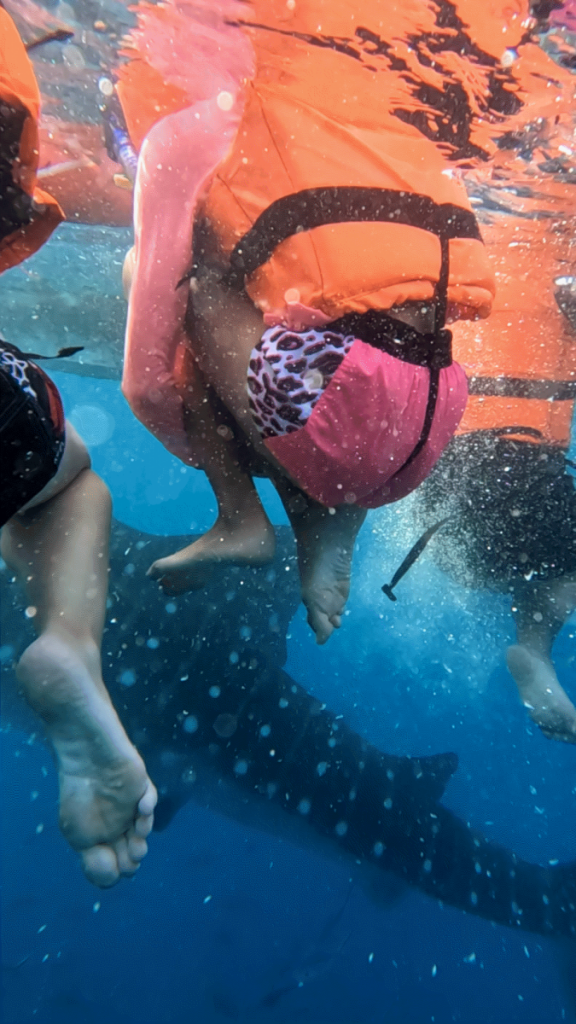
After all this, I went to get my money back for my youngest’s ticket because their snorkel didn’t fit. They didn’t want to give our money back and so I went to speak to the head guy. After beginning to raise my voice about the jellyfish in front of the other tourists, he relented and we got some of our money back. The whole thing was a terrible experience.
I share this to say, it would be much better to avoid Oslob and Bohol for whale sharks and instead head to Donsol where they have wildlife sanctuary’s and do ethical whale shark viewing!
Island Resorts in The Philippines
Boracay is a nice alternative to Palawan island, if you’re not interested in taking chances with Malaria. We stayed at a beautiful resort called the Oasis Resort and Spa on the island for $37 per day! They had complementary massages and transport to long beach and shopping areas, great food on site, hammocks, solid internet, was in walking distance to a local beach, and more!
Food ⭐⭐
In some places we traveled, street food locations are sadly few and far between. But in the Philippines you can find street food and small local markets most anywhere you go. We really enjoyed the fresh fruits, produce, and trying things like fried intestines! But we also fell completely in love with Turon, a popular Filipino snack made by wrapping ripe banana slices in a spring roll wrapper, then frying it. The rolls are coated in brown sugar before frying, creating a crispy, caramelized exterior 😘. They are absolutely heavenly. We might have eaten 5x more Turon than we should have 😏.
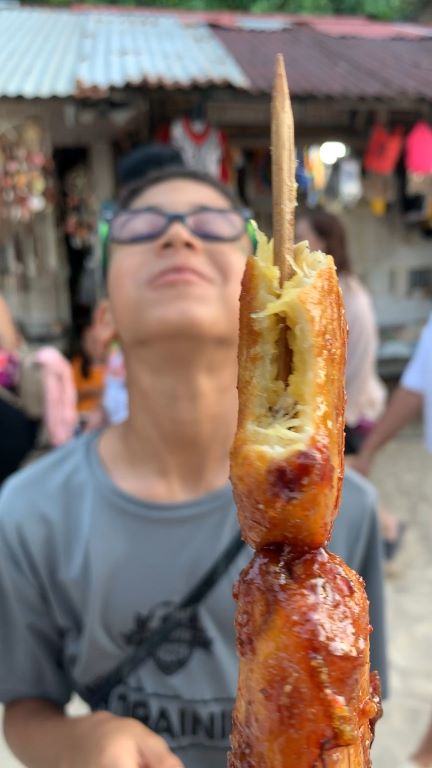
But when we weren’t enjoying Turon we sometimes found ourselves feeding some hungry boys. On several occasions we saw hungry (presumably homeless boys) boys siting outside of restaurants. We’d invite them to join us but they much preferred to grab some food and go because the security guards and waitstaff give them a hard time. That said, some did join us and while they weren’t much on conversation it was nice to show them someone cared about them. I even caught some of the waitstaff playing the role of shooing one of the kids away but only half heartedly because she cracked a smirk at how cute the little guy was.
We had some really good food in the Philippines, especially at the Tagbilaran Church of Christ in Bohol. Those ladies can COOOOOOK! We even had Lechon which is roasted pig, and it was AMAAAAZING. Aside from that we found that most restaurants served fried chicken which is really sad to us as westernization is stripping this amazing place of its culture. We saw a high number of kids that were VERY overweight and were only interested in eating friend foods and drinking coke. Sadly, this trend seems to be picking up steam in the more developed Asian countries 😥.
Culture ⭐⭐⭐
One thing that immediately struck us having spent so much time in Asia before arriving in the Philippines was that it is a Christian nation. Their Tuk Tuk’s have scriptures on them and they pause in the middle of the day at grocery stores for prayer! This is due to the Spanish occupation in the 1500’s. In fact, the Filipino language sounds a lot like Spanish because it incorporates many Spanish loanwords and expressions. One of the local’s I spoke to said that Filipinos are basically “the Mexican Asians😆”.
While the people are generally very kind and happy, there is a LOT of poverty. One local informed us that the philippines used to be considered “the tiger of Asia” and was the most wealthy region in Asia. But after a greedy politician sold the island of Boreo, which has all the oil resources, they were plunged into poverty and haven’t recovered.
Living Essentials ⭐⭐⭐
Cost of Living ⭐⭐⭐ | Internet Access ⭐⭐⭐ | Housing & Transport ⭐⭐⭐
As I covered above with the resort example, cost of living in Philippines is definitely favorable for long term stays but this also extends to food, lodging and transportation. If you’re a smaller party, Tuk Tuk’s are a great and low cost way to cover short distances and in areas outside the major cities, even do day trips.
We were shocked when traveling to Boracay. First because we thought our flight brought us to Boracay. Turns out it drops you at a neighboring island. You then have to take Tuk Tuks to a speed boat terminal which will bring you to Boracay! At Boracay boat terminal there is another fleet of Tuk Tuks that will take you to your accommodations!
Thailand⭐⭐
Lifestyle and Comfort ⭐⭐
Kid Friendliness ⭐⭐
I will say that we had VERY high hopes for Thailand because we have always heard SOOO much about it. It’s the land of smiles, amazing beaches, jaw dropping temples and the like. We did have some really cool experiences there, but we also had several not so great ones. Aside from the connections we made at several amazing churches in Bangkok, Phuket, and Chiang Mai, we found the Thai people to be rather reserved and somewhat difficult to engage. Some of that was language barrier and a cultural shyness to try their English on a native speaker. For a place dubbed the land of smiles, we found that the people in Vietnam were far more likely to flash a smile.
There were also a couple times in Bangkok where we felt unsafe. Once, when we were in a market area buying some Rotis my son asked if he could sit down because he was feeling hot. He did and a random guy came up to him with a cutting tool and made a show of cutting his private area and then ran off into the crowd. None of us saw it, but when he told my wife about it, she turned and they both saw a man who apparently saw the encounter and was laughing about it.
Another time, we were talking with a man and my youngest showed him how he could solve a rubiks cube in seconds. The man was so excited by this that he cupped our son in his private area saying, wow he’s a real man! We weren’t sure if this was a cultural norm or what so we politely push him off and said no no. Later, we asked members of the church there in Bangkok about the encounter and they said no person from Thailand would ever do such a thing. They thought perhaps the man was an immigrant from Myanmar thinking this matched some of the culture from that country?
That said, we found Chiang Mai and Phuket significantly more kid friendly than Bangkok. The climate is less harsh, the pace of life is far more relaxed.
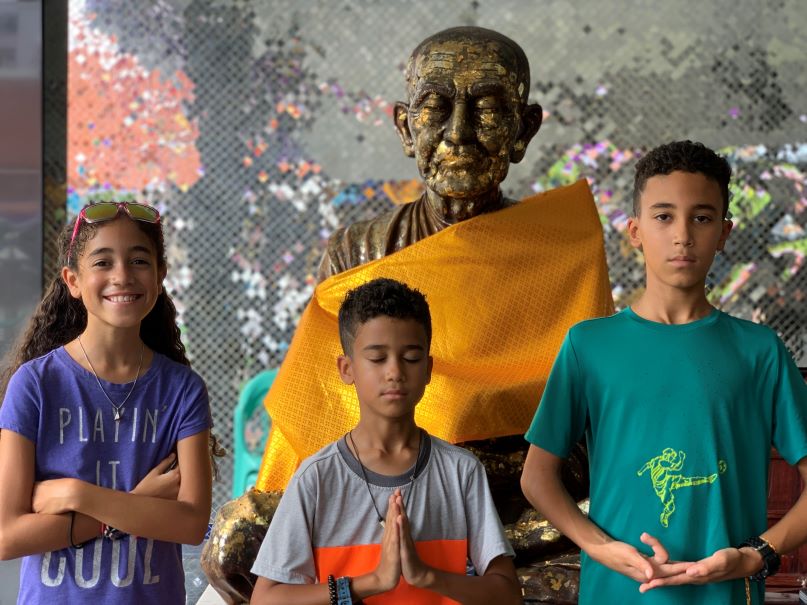
Health & Safety ⭐⭐
We have been traveling full time now since 2022. The only time we’ve really gotten sick was in Phuket Thailand. I’ve heard a number of travelers affectionately refer to this as “Thai Tummy,” which leads me to believe this is more common than I’d like to think. We were horribly sick for nearly three weeks. We have to theories as to what got us:
For one, there are questionable meat handling practices in much of Asia, but especially in the beach areas of Phuket. Sure the seafood is fresh but it’s also often sitting out in the sun all day, half submerged in ice. It’s unclear what the cold chain was for the food before it was put out on display. We didn’t each any seafood, but we definitely ate other meats which often have similar handling. We were careful for the remainder of our trip to eat mostly vegetarian with perhaps a fried egg!
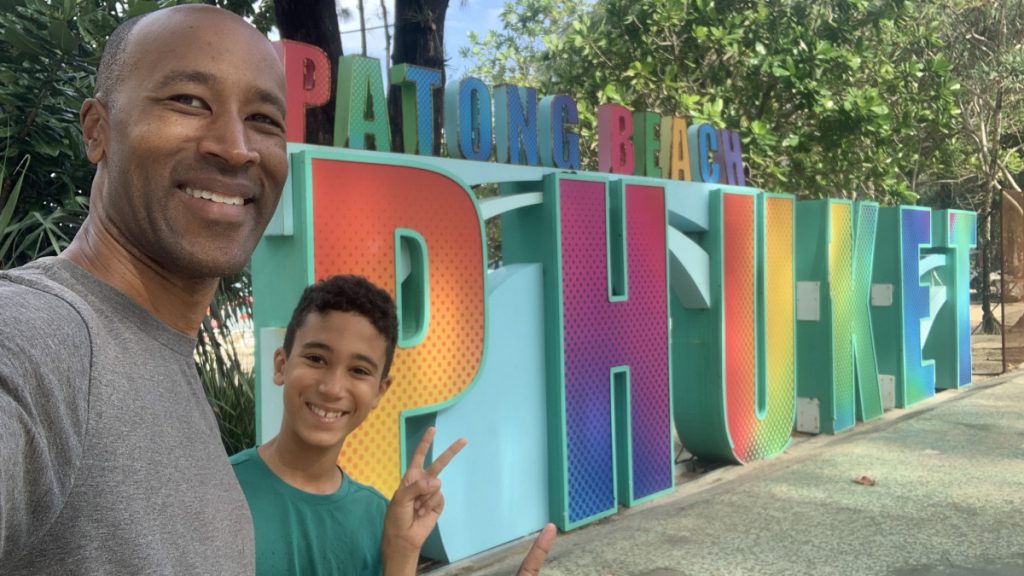
That said, we most likely got sick on the beach. You see, Thailand has these open sewer systems throughout their cities. They smell REALLY bad all the time. As you’re walking through the city, you constantly get these really gross puffs of hot raw sewage in your nose. Also, some hotels and homestays will have this smell coming from their drains and if you don’t have a way to block it off, the smell seeps through your suitcase into your clothes.
Well one day in Phuket, there was a massive rain storm that flooded the area. The next day we went swimming in the beach. We saw that there was a boat channel from the city that fed into the beach and decided to move away from it down the beach. It might not have been enough. Another confirmation that the beach was our ground zero is that my wife is the only one who didn’t get in the water that day and she didn’t get sick, while the rest of us went through a couple rounds of it. We’ve shared this story with surfers since and they advised that the surfing community usually gives the beach 72 hours after a storm to flush out the toxins that can from from city run off 🤮. Live and learn!
Nature & Weather ⭐⭐
Thailand is very HOT. We spent a couple of days touring the temples in Bangkok and they were AMAZING but we were SOO miserable it was hard to enjoy. If you decide to go, check the weather and find the cooler parts of the year and perhaps go on a cloudy day! The only reprieve that we had from the heat was when we took a fast boat tour around the city and to some temples on the other side of the canal.
As I mentioned, weather in mountainous areas of the north i.e Chiang Mai, Chiang Rai are FAR more pleasant.
Cultural Experience ⭐⭐
Experiences ⭐⭐⭐ | Culture ⭐⭐
Despite the heat, we had some really cool experiences in Thailand. In Bangkok, there is a really cool snake farming center where you can see giant pythons, 12 foot king cobras and many highly venomous species. There are other green areas where we saw these huge monitor lizards that are often up to 5 feet long! There are dozens of intricately adorned temples, and canals so you can take boat trips or visit a floating market. We went to one of their markets around the city and found ourselves some new carry-on bags for like $16 bucks a piece (much to the chagrin of the shop owner)!
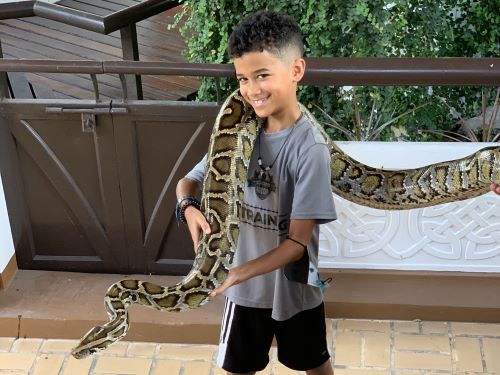
But, we had the best time in Chiang Mai and Chiang Rai where it wasn’t quite so hot and we weren’t constantly under attack by the open sewers. There, we did this AMAZING ethical elephant encounter where we got to feed and take care of wild elephants, up close and personal! We did white water rafting, and even climbed a waterfall.
There are two temples in Chiang Rai that are must sees, the White and the Blue temples. They are absolutely jaw dropping. There is a third “temple” that they advertise there that I would completely avoid. It’s not even a temple, its more of a dark perverted death museum called the black temple. It’s where an old man stored thousands of crocodile and African animal carcasses and horns and where he made statues of disproportionate male anatomy. Not the type of educational experience I had in mind for my kids when I signed up for the tour!
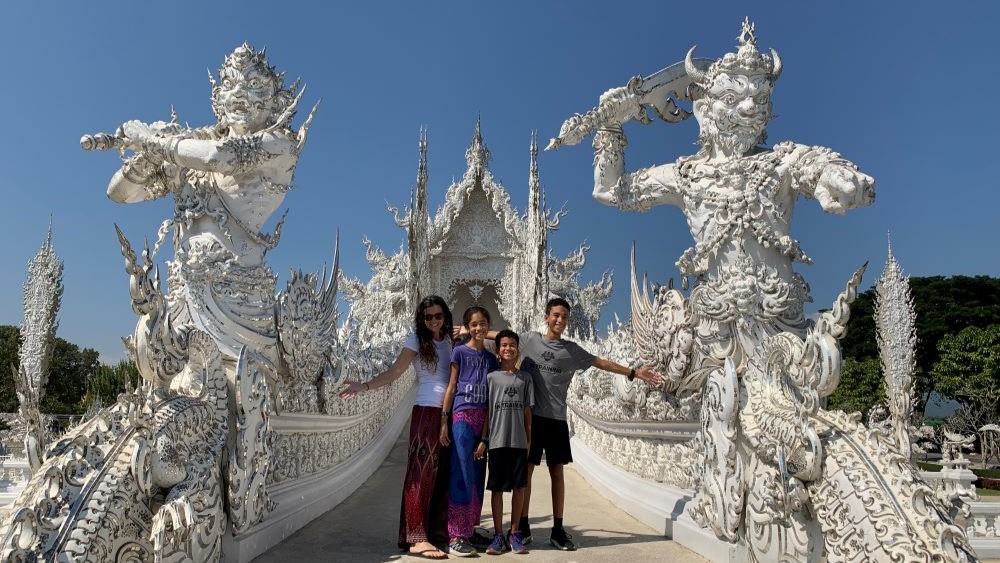
Food ⭐⭐
We love spicy food and so we were immediately at home in Thailand. We would ask for our food to be a “little spicy” and then we would spend the next 20 minutes sweating and fanning ourselves while we inhaled the new flavors! But after a while we found that many restaurants serve the same few dishes. We quickly became bored with the meals. When we tried to branch out and try new things we found that we didn’t like them because they tend to use “all the meat.” Meaning, you might find gristle, bone, fat along with the lean meat, even in a hamburger! So, for our 60 days in Thailand, we ate a lot of vegetarian and fried eggs.
Living Essentials ⭐⭐⭐
Cost of Living ⭐⭐⭐ | Internet Access ⭐⭐⭐ | Housing & Transport ⭐⭐⭐
In general, we found Thailand to be very cheap. The food, the lodging, the transportation with two notable exceptions. Phuket was very expensive from the very beginning. Getting a taxi to take you a few miles from the airport was ten times what it would cost in Bangkok! Similarly, anything you wanted to buy whether it was food, groceries, anything on the main strips along the beaches were orders of magnitude more expensive.
The funny thing was, if you just took a side street you could find little restaurants, literally a stones throw from the main road for 10x or more cheaper than what they’re selling the tourists. To be honest, we didn’t find the beaches in Phuket to be all that impressive. However, many people told us that Phi Phi island to the east, for instance is stunning. But we were too sick with Thai Tummy at the time to check it out.
The other notable exception was Chiang Rai and Chiang Mai. They were far cheaper, even than Bangkok! With the cooler climate and some of the cool experiences we mentioned above, that’d be where I’d park myself if I was going to spend more time in Thailand!
Some of these links are affiliate products, they help keep us on the road! If you purchase a product or service with the links that I provide I may receive a small commission. There is no additional charge to you!
